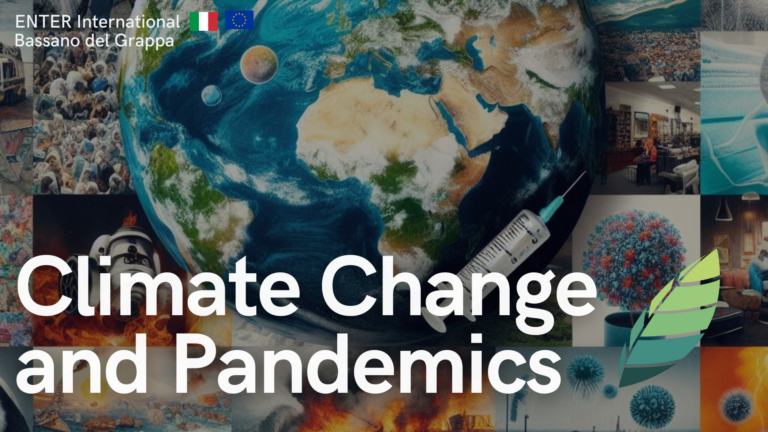- How new viruses had an urge:
Because of Globalization, people can travel between continents using ships, airplanes, and trains, thereby increasing the interactions between individuals from other parts of the world. This has contributed to the spread of new illnesses and viruses that other individuals never had been in contact with before. The most recent event was the Covid-19 pandemic that is mostly agreed to first appear in China through an intermediate animal that is possibly part of illegal sales; the species is still being debated. Moreover, these events have worried scientists to understand the risks of new viruses related to climate change around the world.
- Possibility of new viruses:
It is certain to affirm that constant global transformations stand, encompassing social, economic, political, and more than ever, climatic. The biological feature means that there is a long process of mutation that affects human beings, and it is uncertain what the mutation will affect. However, unknown circumstances might turn the viruses suitable to infect people, as occurred with Sars-cov2 – the coronavirus that existed before in bats in China -, until infecting people. The constant intrusions of humans in nature are turning the chances of contamination more common than ever.
A study has pointed out that thousands of unknown viruses in the isolated forest of the Amazon, whether they are isolated as the research conducted by Physic Paulo Artaxo, who cites: “What we are doing makes no sense. It is only a matter of time before another pandemic like this comes into contact with us. Without going far, in the Amazon rainforest, there are thousands of viruses like this, hiding”.
In addition, the study mentions that what science currently knows about the biodiversity of the biggest tropical forest in the world is limited. The bats were the instrument of study to discover the relations through the pathogen and the many species of bat, discovering that they are a reservoir of suitable viruses. Otherwise in theory the research computed, that if a virus escapes, it could infect 1.2 billion people on a scale of 6 months, exponentially higher than the 10.5 million Coronavirus, due to Brazil’s size of 1.5 million km² of land, which makes the country a larger risk than any other country, with conditions for zoonotic overflow, as virus transitions from animals to humans are known.
On the other hand, Amazon lost 21 trees per second in 2022 according to MapaBiomas due to human actions of mining, fires, wood trafficking, and agribusiness participation, allowing for the possibility of a super-contagious virus to emerge, perhaps surpassing the impact of Sars-Cov2.
THAILAND: Infectious disease researchers catch bats to study. Adam Dean/New York Times/Redux.
- Preventions to future catastrophes in the public health and planet:
As it is well known, climate change has brought uncertain events, increasing and decreasing temperatures. As Rachel Baker from Brown University pointed out in an interview for the Council on Foreign Relations: “It would be hard to deny that climate change is making the burden of infectious disease worse”. Consequently, it has turned into a significant public health and environmental issue that countries around the world should allocate more resources to investigate and collect data on the most prominent environments where possible pathogens can appear.
Yet, a significant challenge arises when 70% of the nations report that their biggest challenge is insufficient funds. Therefore, reforming global cooperation is crucial to address present global issues. The concept of “One Health”, funded/founded by the European Union, suggests and emphasizes the connections between humans, animals, and the natural environment.
Furthermore, effective actions that do not demand substantial financial resources are the research, the investment of time and expertise in the development of campaigns of vaccinations, public health, and targeted attention for poor, vulnerable, and criminalized populations. It is not only a scientific duty to raise awareness among the populations.

References:
Fujimura, S. (2003) Purple death: The great flu of 1918 – PAHO, PAHO- Pan American Health Organization. Available at: https://www.paho.org/en/who-we-are/history-paho/purple-death-great-flu-1918 (Accessed: 25 June 2023).
Biernath, A. (2020) A Geografia Das pandemias: O que faz um novo vírus surgir em Determinado Lugar do Mundo?, BBC News Brasil. Available at: https://www.bbc.com/portuguese/internacional-54669808 (Accessed: 24 June 2023).
Pease, V.G. and R. (2023) Have we found the ‘animal origin’ of covid?, BBC News. Available at: https://www.bbc.com/news/science-environment-65067264 (Accessed: 24 June 2023).
de S. Paulo, F. (2023) Por que a próxima pandemia pode surgir no Brasil, Folha de S.Paulo. Available at: https://www1.folha.uol.com.br/ciencia/2023/05/por-que-a-proxima-pandemia-pode-surgir-no-brasil.shtml (Accessed: 25 June 2023).
Globo, O. (2020) Na Floresta Amazônica, existem milhares de Vírus Como Este, Escondidos’, diz O físico Paulo Artaxo, Comunicação Instituto de Física da USP . Available at: http://portal.if.usp.br/imprensa/pt-br/node/2626 (Accessed: 25 June 2023).
Biomas Alerta, M. (2023) Every second, about 21 trees were cut down in the Amazon in 2022, MapBiomas Alerta. Available at: https://alerta.mapbiomas.org/en/every-second-about-21-trees-were-cut-down-in-the-amazon-in-2022 (Accessed: 25 June 2023).Klobucita, C. and Maizland, L. (2022) Perilous pathogens: How climate change is increasing the threat of diseases, Council on Foreign Relations. Available at: https://www.cfr.org/article/perilous-pathogens-how-climate-change-increasing-threat-diseases#chapter-title-0-5 (Accessed: 26 June 2023).
